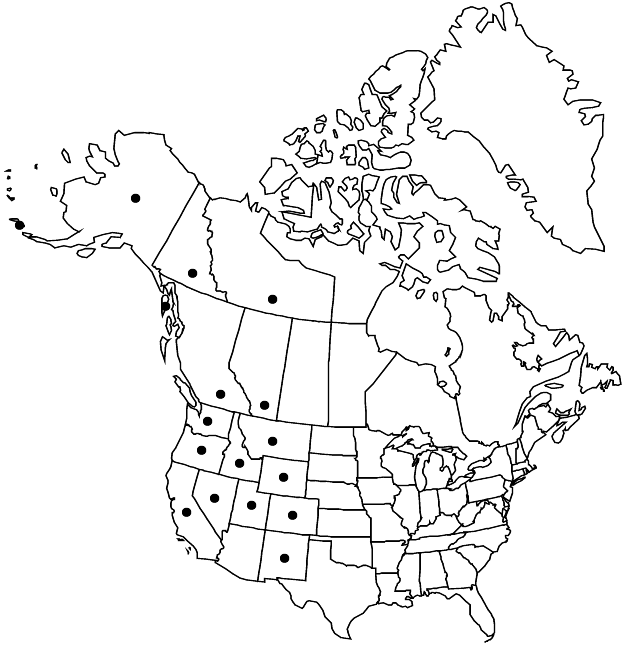Stellaria calycantha
Mém. Acad. Imp. Sci. St.-Pétersbourg, Sér. 6, Sci. Math. 2: 127. 1833.
Plants perennial, forming clumps, from slender rhizomes. Stems erect or trailing, branched, square, weak, to 25(–35) cm, glabrous or pilose, never papillate. Leaves sessile or subsessile; blade ovate to elliptic, rarely oblong, widest proximal to middle, 5–25 mm, thin, base round, margins entire, apex acute, glabrous or rarely ciliate. Inflorescences terminal, 1–5-flowered cymes; bracts foliaceous. Pedicels ascending, not reflexed, 5–25(–50) mm, glabrous. Flowers 3–5 mm; sepals 5, obscurely veined, ovate, 2–2.5 mm (rarely 3.5 in fruit), margins broad, scarious, apex broadly acute, glabrous; petals absent or 1–5, 1–1.5 mm, shorter than sepals, blade apex deeply lobed; stamens 5; styles 3, usually curved, 0.4–0.9 mm. Capsules green, semitransparent, globose to broadly ovoid, 3–5 mm, to 1.5 times as long as broad, longer than sepals, apex obtuse, opening by 3 valves; carpophore absent. Seeds brown, ovate, 0.5–0.9 mm, smooth or shallowly tuberculate. 2n = 26.
Phenology: Flowering summer.
Habitat: Alpine slopes, meadows, shores of lakes and streams
Elevation: 0-3700 m
Distribution

Alta., B.C., N.W.T., Yukon, Alaska, Calif., Colo., Idaho, Mont., Nev., N.Mex., Oreg., Utah, Wash., Wyo., Asia (Russian Far East).
Discussion
Selected References
None.